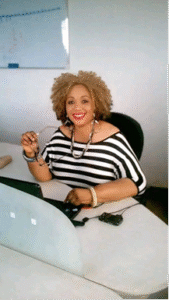By Zainab Tunkara Clarkson (aka Zee)
As schools reopened across Sierra Leone this September, and the nation marked Teachers’ Week on October 5, hope filled classrooms once more. Every child who walks into a classroom carries a dream to learn, to achieve, to build a better future. Yet, for many, poverty and inequality will soon determine how far that dream can go.

In Koidu Town, Kono District, local shoemaker, Mr. Yamba, once watched with pride as his two daughters excelled in primary school. Teachers described them as brilliant. Their future looked bright. But by secondary school, both had dropped out, victims of tramadol abuse and early pregnancy. Their story echoes across Sierra Leone, where poverty continues to rob children of their potential.
A Tale of Two Sierra Leones
In diamond-rich but impoverished Kono, schools often lack qualified teachers, textbooks, and even basic infrastructure. Many girls leave school because their parents cannot afford uniforms or transport, and teenage pregnancy remains widespread.
In Bo District, nearly three in ten girls give birth before the age of 18. Despite hosting some of the country’s best secondary schools, many families still struggle to keep their children enrolled.
By contrast, in Freetown’s Western Area Urban, families are more likely to afford private education and extra lessons. Secondary school completion rates are higher, and the city’s relative wealth shields children from many of the barriers their rural peers face.
In border districts such as Kailahun and Kambia, the challenges deepen. Chronic poverty and a shortage of trained teachers leave classrooms overcrowded or abandoned. Out-of-school rates remain high, particularly for girls.
The Numbers Tell the Story
Only 29 percent of girls in Sierra Leone complete secondary school, compared to 44 percent of boys. Nearly one in three girls marry or give birth before turning 18 , among the highest rates in West Africa. More than 60 percent of Sierra Leoneans live in multidimensional poverty, meaning that even small costs — such as uniforms, exam fees, or transport — can end a child’s education.
Free, But Not Equal
The government’s Free Quality School Education (FQSE) program, launched in 2018, has lifted a burden for many families. But the term “free” often masks the hidden costs that continue to block access: hunger, distance, and a lack of supplies.
In many rural areas, girls face additional risks of sexual exploitation and limited access to reproductive health services — factors that contribute to high dropout rates and early pregnancies.
Bridging the Divide
Education experts say that addressing Sierra Leone’s education divide requires more than tuition-free schooling. They call for:
- Scholarships and cash transfers for the poorest households.
- Expanded youth-friendly health services to prevent early pregnancy and substance abuse.
- Re-entry programs to support young mothers returning to school.
- Increased funding for schools in disadvantaged districts such as Kono, Kailahun, and Kambia.
A Call to Conscience
The story of the shoemaker’s daughters in Koidu Town is a reminder that intelligence is universal, but opportunity is not. As Sierra Leone celebrates its teachers, it must also remember the students who never made it to graduation, children whose potential was lost, not through lack of ability, but through the crushing weight of poverty.
Sierra Leone cannot afford to waste its human capital. Every child, no matter where they are born, deserves not just access to a classroom, but a fair chance to learn, to thrive, and to build a future free from the constraints of poverty.
#followme
#fypシ゚
#highlightseveryone